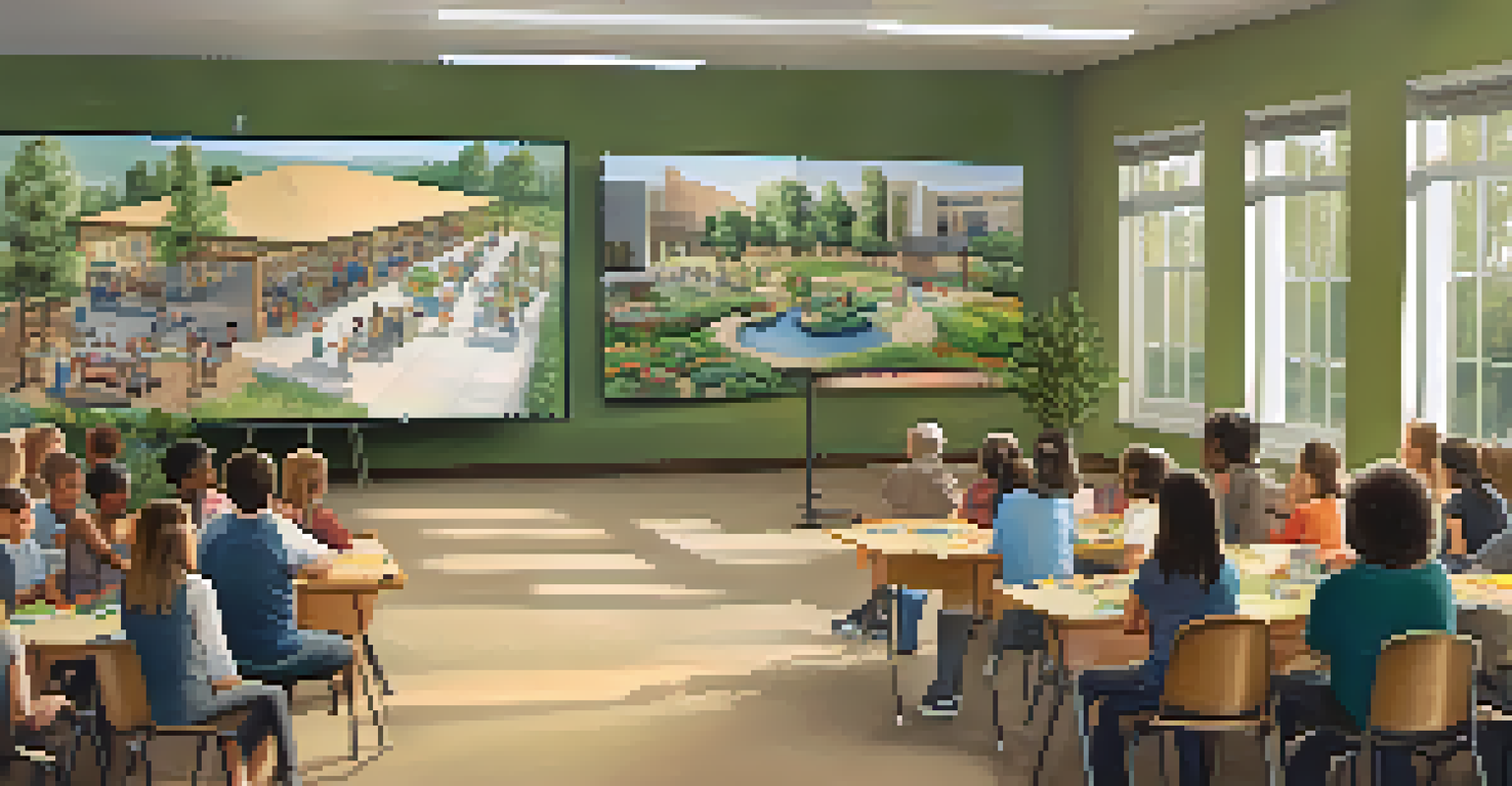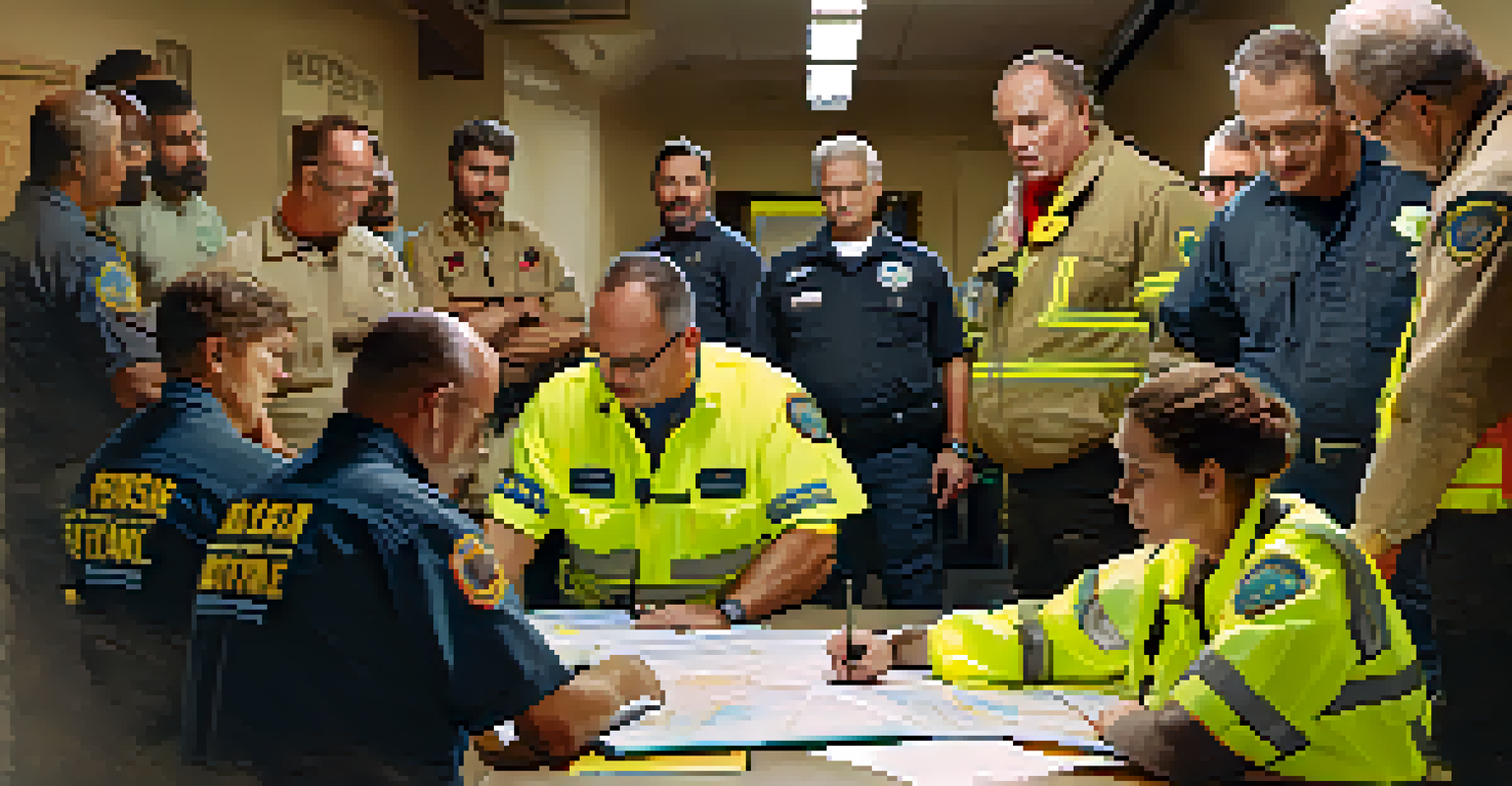Creating a Neighborhood Watch Program for Wildfire Safety

Understanding the Importance of Wildfire Safety
Wildfires can devastate communities, making wildfire safety a crucial topic for residents, especially in high-risk areas. Understanding the local fire risks helps empower community members to take proactive measures. By fostering awareness, neighborhoods can reduce their vulnerability and protect homes and families from potential disasters.
An ounce of prevention is worth a pound of cure.
Creating a strong foundation of knowledge about wildfires sets the stage for a successful Neighborhood Watch program. This means not only knowing the fire season but also being aware of local vegetation that may act as fuel. Engaging in discussions about fire safety can lead to a more informed and prepared community.
Ultimately, recognizing the importance of wildfire safety lays the groundwork for collaboration among neighbors. When everyone is on the same page, the community can work together to develop effective strategies that promote safety and resilience.
Gathering Community Interest and Support
Before launching a Neighborhood Watch program, it's essential to gauge community interest. Organizing a casual gathering or community meeting can help bring people together to discuss wildfire safety concerns. This initial engagement is key to identifying who is passionate about making a difference in their neighborhood.

Encouraging participation from various demographics—families, seniors, and local businesses—can create a diverse group committed to fire safety. Sharing personal stories or experiences with wildfires can inspire others to contribute. A sense of shared purpose can foster a strong community bond and motivate members to take action.
Engage Community for Wildfire Safety
Gathering community support and interest is essential for establishing a proactive Neighborhood Watch program focused on wildfire safety.
Once interest is established, forming a core group of dedicated volunteers can help steer the program forward. This team can brainstorm ideas, develop strategies, and delegate responsibilities, ensuring that the program remains organized and focused on its goals.
Establishing Communication Channels
Effective communication is the backbone of any successful Neighborhood Watch program. Establishing clear channels for sharing information—like group chats, social media pages, or email lists—ensures everyone stays informed about wildfire risks and safety measures. Regular updates can keep the community engaged and prepared.
The best way to predict the future is to create it.
Additionally, creating a system for reporting suspicious activity or fire hazards can enhance community vigilance. Encouraging neighbors to share observations helps build trust and accountability. When residents feel they can communicate openly, it fosters a collaborative environment focused on safety.
Consider organizing regular meetings to discuss ongoing concerns, share updates, and plan future activities. These gatherings can also serve as a platform to educate members on wildfire prevention techniques and best practices, reinforcing the importance of communication in fostering a safe neighborhood.
Developing a Wildfire Safety Plan
A well-crafted wildfire safety plan is essential for any Neighborhood Watch program. This plan should outline strategies for prevention, evacuation procedures, and emergency contacts. By having a clear blueprint, residents can feel more secure knowing they have a plan in place if a fire occurs.
Engaging experts, such as local fire department officials, can provide valuable insights into creating an effective plan. Their expertise can help identify specific risks in the area and recommend practical measures for mitigation. Collaborating with professionals ensures that the plan is comprehensive and tailored to the community's needs.
Create a Wildfire Safety Plan
Developing a comprehensive wildfire safety plan with expert input ensures residents are prepared for potential fire emergencies.
Once the plan is in place, sharing it with all residents is crucial. Distributing printed copies and hosting informational sessions can ensure that everyone is familiar with the procedures. Regularly reviewing and updating the plan keeps it relevant and effective as conditions change over time.
Educating the Community on Fire Prevention
Education plays a vital role in wildfire prevention efforts. Organizing workshops or informational sessions can help residents learn about fire-resistant landscaping, proper debris disposal, and safe outdoor practices. The more informed community members are, the better equipped they will be to prevent wildfires.
Utilizing local resources, such as fire department programs or environmental organizations, can enhance educational efforts. These groups often have materials and experts who can provide valuable insights. Collaborating with them can also foster a sense of community involvement in broader fire safety initiatives.
Additionally, creating a community resource center where residents can access educational literature, tools, and tips can be beneficial. This center can act as a hub for information, making it easier for residents to engage with wildfire prevention efforts actively.
Creating a Community Response Team
Forming a Community Response Team (CRT) is a proactive step in enhancing wildfire safety. This dedicated group can coordinate efforts during emergencies, ensuring that everyone knows their roles and responsibilities. A well-organized team can make a significant difference in how effectively a neighborhood responds to wildfires.
Members of the CRT should be trained in basic emergency response procedures, including first aid, evacuation protocols, and communication strategies. Training can be facilitated through partnerships with local emergency services, ensuring that volunteers are well-prepared for any situation. Empowering residents with these skills fosters confidence and readiness.
Educate and Maintain Community Involvement
Ongoing education and engagement activities are crucial for sustaining interest in wildfire safety efforts within the community.
Regular drills and practice scenarios can help keep the team sharp and ready to act. These exercises can also serve as a reminder to the entire community about the importance of preparedness, making wildfire safety a shared priority.
Maintaining Engagement and Sustaining Efforts
Sustaining interest and engagement in the Neighborhood Watch program is vital for long-term success. Regularly scheduled events, such as community clean-ups or educational workshops, can keep the momentum going. When residents see ongoing efforts, they are more likely to stay involved and committed.
Creating a rewards program or recognition system for active participants can boost morale and encourage continued participation. Celebrating milestones and successes can reinforce the community's commitment to wildfire safety. By acknowledging the contributions of volunteers, you foster a sense of pride and belonging.

Finally, soliciting feedback from community members can help refine the program and address any concerns. Open communication ensures that everyone feels valued and heard, paving the way for a more resilient and united neighborhood in the face of wildfire threats.